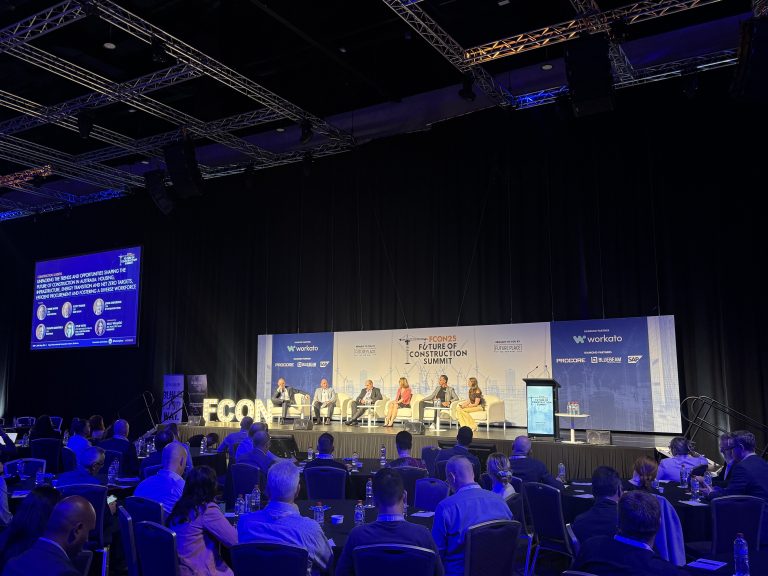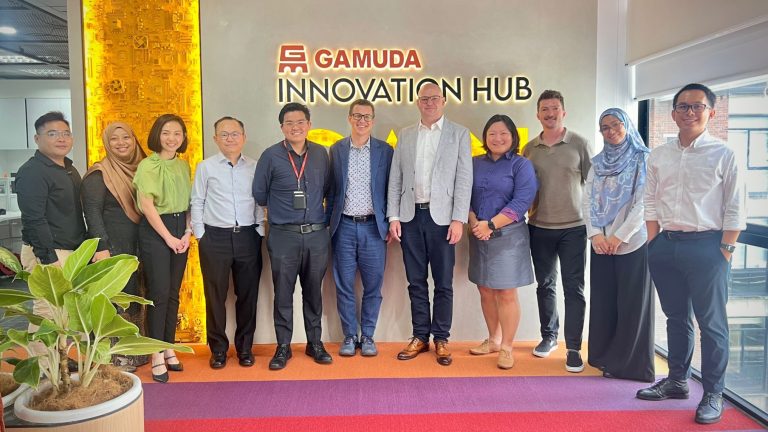On 28 January 2022, Gamuda Excellence Team (GET) hosted its sixth TechTalks with guests Dr. Daniel Kong, Civil Engineering Director of Monash University, and Prof. Marios Soutsos from Belfast’s Queens University. Both guests are research partners in LowCoPreCon, a collaborative green concrete project between Malaysia and the UK.
Dr. Daniel started the session by defining green concrete. Essentially, it benefits the environment by reducing fossil fuel usage and using cement alternatives in manufacturing it. He followed a case study of geopolymer concrete, made from byproducts such as pulverised fly ash (PFA)1. Besides sustainability, geopolymer concrete offers benefits compared to conventional cement, such as increased strength and workability. He also shared about LowCoPreCon’s achievements in reducing costs and carbon footprint.

In the following panel session, Lim Hui Yan, Executive Director of Gamuda Engineering (GE), and Norhaafiza Danial, Sustainability Manager from Gamuda Land (GL) shared about Gamuda Group’s sustainability measures.
Here are select extracts edited for clarity.
Question: What are some promising green or recyclable cement replacing materials making significant headways in the fight against climate change?
Prof. Marios: Partial replacement of cement will make a difference. There is PFA, which we use for geopolymer concrete. This byproduct from coal combustion is temporarily stored in ash ponds. Now that the UK has phased out coal power stations, we need permits to quarry the PFA from the ash ponds for upcycling. Due to strict government regulations, we import PFA from the East, where it is abundant.
Dr. Daniel: Lateritic soil and calcining clays are other precursors. However, more energy consumption is required to generate equal yield. Hence, it is more logical to use waste materials to reduce their accumulation.
Question: How are we greening our concrete in the local context?
Dr. Daniel: Malaysia’s research has found potential for using bottom ash2, which is equally abundant but underutilised compared to PFA.
Hui Yan: Cement manufacturing contributes to high CO2 emissions. To solve this root issue, we must look at the ecosystem holistically. Gamuda is aptly positioned to drive market acceptance for cement substitutes as precast concrete manufacturers.
Question: Where are we at with awareness of cement solutions and climate change?
Norhaafiza: Malaysia needs more expertise! Concrete suppliers have varied opinions on concrete mix design. Due to lack of awareness or training, many are hesitant to implement recyclable material in concrete. Materials like GGBS (short for ground granulated blast-furnace slag) have higher costs, longer maturity, and instability. Thus, productivity and construction speed tend to override priorities to decarbonise.
We are training green coordinators to calculate emissions and make mitigation plans. Gamuda Green Plan targets reducing carbon emissions by 30% in 2025 and 45% in 2030.
We should demonstrate usage of geopolymers in structures. Experts need to encourage stakeholders like architects and consultants.
Prof. Marios Soutsos
Question: What was your experience working across different climates and countries?
Prof. Marios: Concrete maturing differs between climates, so we work around that. For example, in the UK, we use GGBS to quicken concrete setting time in winter [concrete sets faster in Malaysia’s tropical weather].
Dr. Daniel: One cultural gap is in how we view concreting works as expertise. Using green concrete would require higher-skilled labourers to ensure the “parameters” for casting yield the best outcomes.
In closing, the overall consensus was that silo-busting among the construction industry is essential to promote sustainability.
Industry players should work with researchers to share technical insight. Driving the conversation matters too.
Dr. Daniel Kong
—
1 PFA is the residue from coal combustion in electric power plants. When combined with lime and water, PFA forms supplementary cementitious products similar to conventional cement.
2 Bottom ash is another by-product from coal power plants. It is denser than PFA, however, both ashes present similar chemical composition and compressive strength.




